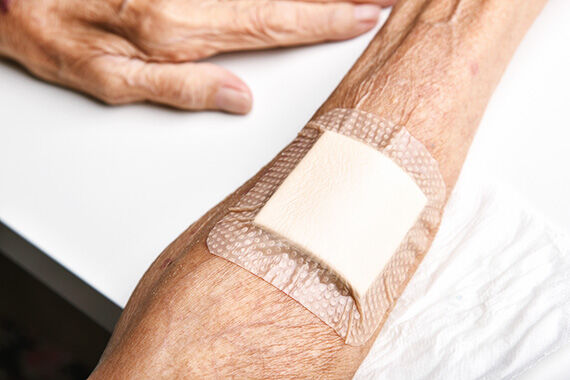How this PCN… set up a skin tear pilot

This site is intended for health professionals only

As part of the enhanced health in care homes service, Bexhill PCN in East Sussex set up a wound dressing service for care homes to upskill staff. Clinical director Dr Binodh Chathanath explains
Bexhill PCN in East Sussex has a high proportion of care homes; 29 homes are looking after about 780 older people. We decided to set up a skin tears pilot as part of the PCN training offer for care home staff, to upskill them to manage minor wounds so that patients do not have to be left untreated while they wait for the community nurses.
Prevention of skin tears is important in the care of the elderly population because of the fragility of skin. Consequently, residential homes have high number of these wounds so it’s important to recognise and manage these factors and treat skin tears efficiently to prevent further harm and promote quality of life. The current process in care homes in East Sussex Healthcare Trust (ESHT) is that the district nursing team is asked by the home to assess and dress residents’ wounds. The ambulance service might attend for the first dressing, depending on the time of day and how the wound is first reported to healthcare professionals. Because of pressures on services and the likelihood that injuries occur out of hours, the initial dressing will often be applied by care home staff. Although care homes keep a stock of basic first-aid dressings, these are not always suitable for skin tears.
The first dressing programme for skin tears was proposed by the district nursing team, supported by clinical leads at EHST and our PCN. The aims are:
This programme is for skin tears only and only for the initial dressing application. Further dressing changes are managed by the district nursing team where necessary.
Staff training and education
A training session and a skin tear protocol is provided to care homes who wish to take part in the program. Training can also be accessed via healthcare company Richardson Healthcare Online, which offers free skin tear training to care homes. It is the responsibility of the care home to ensure staff are assessed as competent before they apply dressings.
Care home responsibilities
The care home manager should ensure that:
Care home staff should ensure that they:
Dressing stock
The dressing stock will be provided by the district nursing team and will be replenished on request. The programme uses the dressings that are recommended as best practice by the International Skin Tear Advisory Panel (ISTAP) guidelines, which set the standard for assessing and dressing skin tears. It is recommended that these are the only dressings used as first application for skin tears.
Storage and auditing
Dressings will be provided in a clear, marked, sealable container to be kept in the care home’s medicine room with the district nursing team’s written guidance for assessment, application and auditing. An audit trail, including stock balance, should be kept of dressings to ensure sufficient supply. A document has been provided for this purpose and will help us prove the pilot scheme is successful too.
Record-keeping
A record of each dressing application must be kept in the resident’s care plan and medicines administration record folder. A sheet for this can be provided if the care home does not already record wounds. The wound and resident’s wellbeing should be monitored and a record also kept in the care plan. Nursing or medical advice must be sought if there is deterioration that cannot be managed in the care home. The pilot is managed by the care home manager and matrons and has been well received. The training was delivered face to face and online with CPD certificates. Care home leads and nurses have reported that the pathways are working and staff feel empowered and have better morale.
Dr Binodh Chathanath is clinical director of Bexhill PCN and primary care clinical lead for diabetes at Sussex integrated care system
Read more Pulse PCN case studies here.
Join Pulse PCN’s LinkedIn group here.